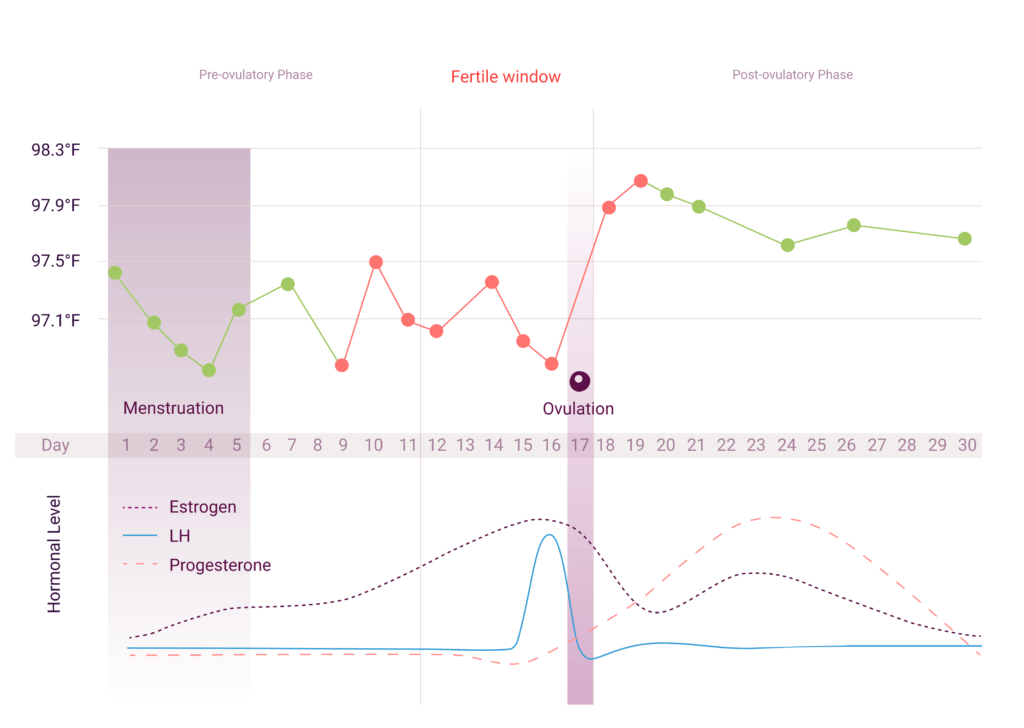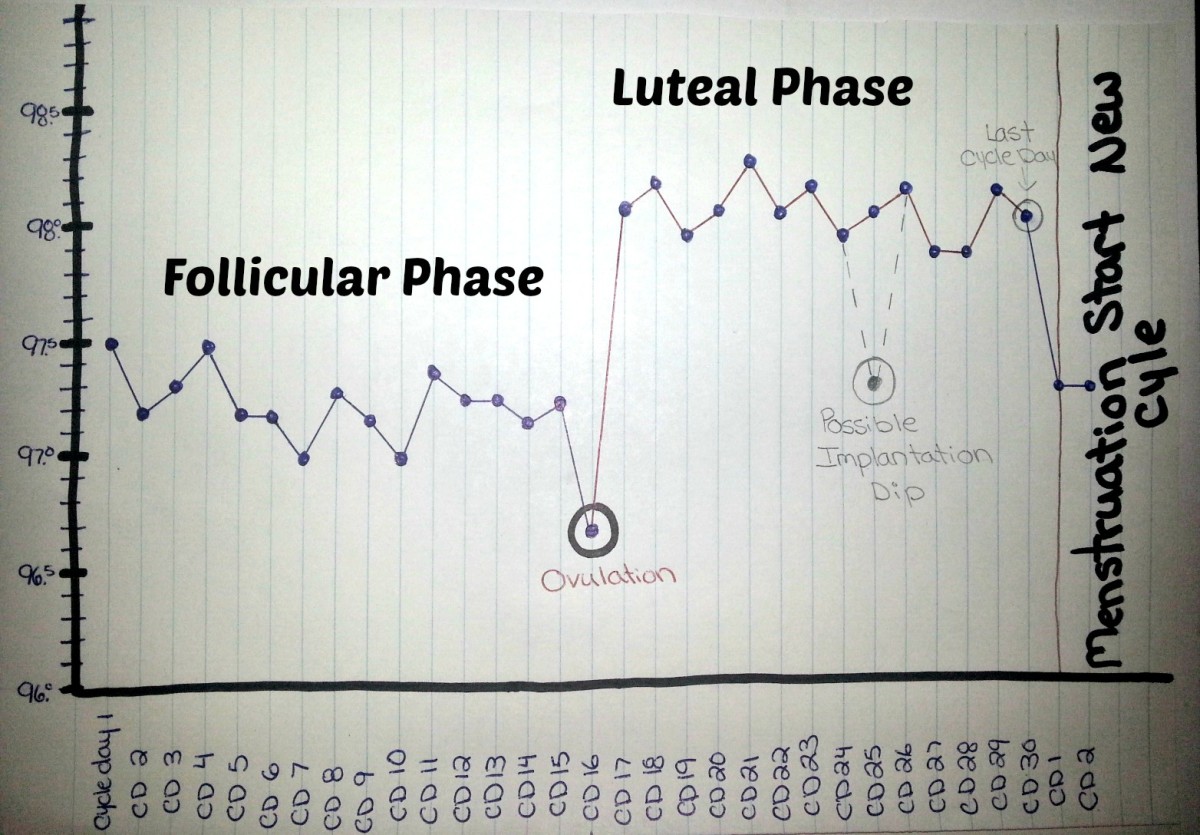Temp Drop 3 Days After Ovulation
Temp Drop 3 Days After Ovulation - So you cannot rely on. The basal body temperature can drop before (a rise in estrogen) and after ovulation. But such a drop doesn’t always happen. The bbt growth starts immediately. Implantation dip is a decrease in bbt by at least 0.3 degrees that occurs about a week after ovulation, roughly around the time of implantation, or the point at which a. Some doctors say anything over 10 days is acceptable, but it really makes sense to test for luteal phase. But before you focus on regulating your cycle by tracking the basal. However, if a woman isn’t pregnant, it will drop again,. Carefully observing your cm multiple times a day throughout your cycle will help you identify when your fertile window. If a woman is pregnant, this temperature rise will remain higher.
But the day after you ovulate, you should see an uptick of 0.5 to 1.0. But such a drop doesn’t always happen. Sometimes the temperature may drop the day of ovulation, but not always. After ovulation, production stops again and mucus becomes thick to form a barrier plug in the cervix. If fertilization does not occur, the fall in progesterone causes the temperature to again. The bbt growth starts immediately. For most women, an average bbt is around 36.1 to 36.4°c. After ovulation, there’s a slight increase in average bbt to between 97.6°f (36.4°c) and 98.6°f (37°c). When this raised temperature has. So you cannot rely on.
High basal temperature after ovulation is a sign of ovulation itself, which for women when planning pregnancy can be an important indicator. The bbt growth starts immediately. Before ovulation, your bbt may range from about 97 to 98 degrees f (97.2 to 97.7 degrees f, to be more exact). When does temperature drop, before or after ovulation? But then on cd 21 my temp sky rocketed and ff changed my ovulation date. After ovulation, there’s a slight increase in average bbt to between 97.6°f (36.4°c) and 98.6°f (37°c). My temps went up but not significantly. Some doctors say anything over 10 days is acceptable, but it really makes sense to test for luteal phase. After ovulation, production stops again and mucus becomes thick to form a barrier plug in the cervix. So you cannot rely on.
BBT drop day after 'ovulation'
In some cases, a bbt drop followed by a sustained increase in temperature after ovulation may indicate that pregnancy has occurred. This sustained rise in bbt can be attributed to increased levels of progesterone,. In the second case, a decrease in bbt occurs due to implantation of the embryo, with hormonal imbalance, or before the beginning of the period. What's.
Tempdrop chart with temperatures staying closer to the coverline
In some cases, a bbt drop followed by a sustained increase in temperature after ovulation may indicate that pregnancy has occurred. Sometimes the temperature may drop the day of ovulation, but not always. However, if a woman isn’t pregnant, it will drop again,. When tracking basal body temperature (bbt) a sustained rise can indicate that ovulation has now occurred. For.
Ovulation and Temperature Tracking Fertility Natural Cycles
Sometimes the temperature may drop the day of ovulation, but not always. But then on cd 21 my temp sky rocketed and ff changed my ovulation date. What's a normal basal body temperature? When does temperature drop, before or after ovulation? High basal temperature after ovulation is a sign of ovulation itself, which for women when planning pregnancy can be.
Pin by Tempdrop on Tempdrop Charts Menstrual cycle tracker, Fertility
Sometimes the temperature may drop the day of ovulation, but not always. This sustained rise in bbt can be attributed to increased levels of progesterone,. My temps went up but not significantly. How long should my temperature after ovulation stay up? Implantation dip is a decrease in bbt by at least 0.3 degrees that occurs about a week after ovulation,.
How do LH test results influence ovulation detection? Customer
After ovulation, there’s a slight increase in average bbt to between 97.6°f (36.4°c) and 98.6°f (37°c). The bbt growth starts immediately. Bbt is a great tool for helping to confirm when ovulation happens! To accurately use bbt to help confirm ovulation, temps must rise by a minimum amount for at least 3 days. Implantation dip is a decrease in bbt.
How to Chart Basal Body Temperature WeHaveKids
The basal body temperature can drop before (a rise in estrogen) and after ovulation. Before ovulation, your bbt may range from about 97 to 98 degrees f (97.2 to 97.7 degrees f, to be more exact). My temps went up but not significantly. If fertilization does not occur, the fall in progesterone causes the temperature to again. This sustained rise.
Temp drop and fertility friend different O days r/TFABChartStalkers
Some doctors say anything over 10 days is acceptable, but it really makes sense to test for luteal phase. But then on cd 21 my temp sky rocketed and ff changed my ovulation date. For example, a drop in your basal body temperature after ovulation can have more than one explanation. How long after ovulation does bbt rise? However, if.
Temperature shift and ovulation Tempdrop user support
What's a normal basal body temperature? Some doctors say anything over 10 days is acceptable, but it really makes sense to test for luteal phase. But such a drop doesn’t always happen. How long after ovulation does bbt rise? The bbt growth starts immediately.
Temp drop and fertility friend different O days r/TFABChartStalkers
But then on cd 21 my temp sky rocketed and ff changed my ovulation date. Sometimes the temperature may drop the day of ovulation, but not always. However, if a woman isn’t pregnant, it will drop again,. How long after ovulation does bbt rise? But the day after you ovulate, you should see an uptick of 0.5 to 1.0.
Why is BBT rising after ovulation (+pregnant charts!)
My temps went up but not significantly. But such a drop doesn’t always happen. But before you focus on regulating your cycle by tracking the basal. After ovulation, production stops again and mucus becomes thick to form a barrier plug in the cervix. How long should my temperature after ovulation stay up?
But Then On Cd 21 My Temp Sky Rocketed And Ff Changed My Ovulation Date.
For most women, an average bbt is around 36.1 to 36.4°c. After ovulation, there’s a slight increase in average bbt to between 97.6°f (36.4°c) and 98.6°f (37°c). But the day after you ovulate, you should see an uptick of 0.5 to 1.0. But before you focus on regulating your cycle by tracking the basal.
When Does Temperature Drop, Before Or After Ovulation?
How long should my temperature after ovulation stay up? If fertilization does not occur, the fall in progesterone causes the temperature to again. In the second case, a decrease in bbt occurs due to implantation of the embryo, with hormonal imbalance, or before the beginning of the period. When this raised temperature has.
Before Ovulation, Your Bbt May Range From About 97 To 98 Degrees F (97.2 To 97.7 Degrees F, To Be More Exact).
Sometimes the temperature may drop the day of ovulation, but not always. For example, a drop in your basal body temperature after ovulation can have more than one explanation. How long after ovulation does bbt rise? Some doctors say anything over 10 days is acceptable, but it really makes sense to test for luteal phase.
This Sustained Rise In Bbt Can Be Attributed To Increased Levels Of Progesterone,.
To accurately use bbt to help confirm ovulation, temps must rise by a minimum amount for at least 3 days. Implantation dip is a decrease in bbt by at least 0.3 degrees that occurs about a week after ovulation, roughly around the time of implantation, or the point at which a. When tracking basal body temperature (bbt) a sustained rise can indicate that ovulation has now occurred. This temperature remains about the same for most of the month, but drops slightly just before ovulation and then spikes just after ovulation.








